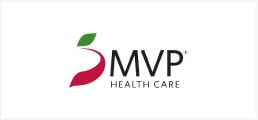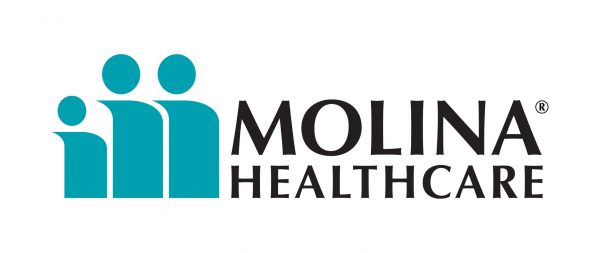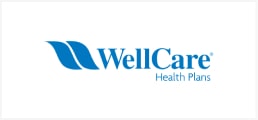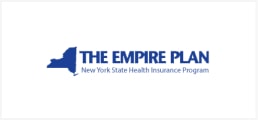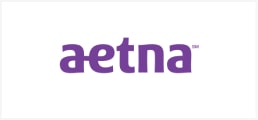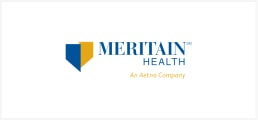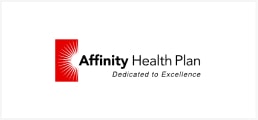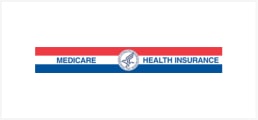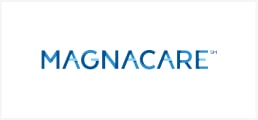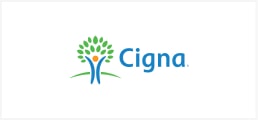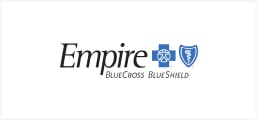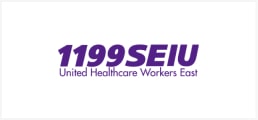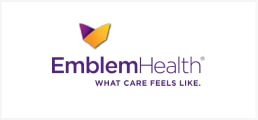New York Vein Treatment
NY Metro Vein Clinic addresses the widespread issue of venous disease. Our treatments cater to the malfunctioning of vein valves, which can lead to bidirectional blood flow, causing blood to pool in the legs rather than return to the heart. This condition can result in both cosmetic and physical discomfort, impacting the quality of life. We offer diagnostic and treatment options for vein diseases, emphasizing the importance of seeking timely medical intervention to prevent disease progression.
NY Metro Vein
New York Metropolitan Vein and Aesthetic Center was founded in 2008 by Dr. Adam Goldman. Dr. Goldman is a board-certified internist and cardiologist, a diplomate of the American Board of Venous and Lymphatic Medicine, and an American Academy of Aesthetic Medicine member. These certifications enable Dr. Goldman and the entire staff of NY Metro Vein to provide full evaluation and treatment for many common vein conditions. There are two convenient New York locations, Corona and New York City, to make it easy for you to schedule an appointment to discuss your concerns.
Understanding Vein Disease
Each year, over 150,000 Americans are diagnosed with vein disease. In all, 5-30% of the US adult population will be impacted by venous disease, commonly called chronic venous insufficiency. Usually, the thin-walled, low-pressure veins use leg muscle activity, and one-way valves in the superficial veins (veins located close to the skin surface) work to overcome gravity and pump blood back to the heart.
Normally, this system allows the blood in the veins to be squeezed by the calf muscles, and as the blood travels up, it passes the one-way valves and is prevented from passing back down to the feet. This way, there is always unidirectional flow back to the heart in a competent system.
This is compared to arteries, which have thick muscular walls and high pressure to transport blood and do not require valves. When these valves malfunction or become incompetent, the blood in the leg becomes bidirectional, and blood on its way to the heart now leaks back toward the feet and pools.
It can cause cosmetic and physical problems that, while not lethal, can affect patients’ quality of life. Many people wait too long to seek medical attention for their vein problems, resulting in the progression of the disease.
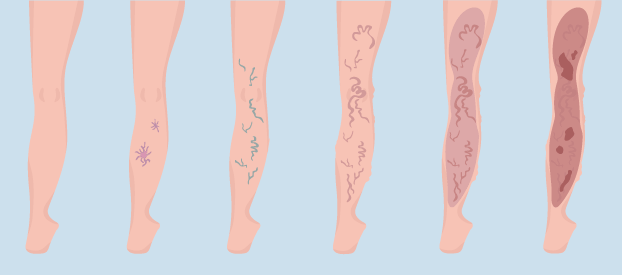
Vein Valve Incompetency
Common causes of vein valve incompetency include trauma, advancing age, pregnancy, long episodes of standing or sitting, family history of vein problems, or smoking. Any of these conditions can affect the valves of the veins, resulting in blood pooling and skin changes and symptoms. These symptoms include leg swelling, itching, heaviness, and cramping. Over time, the area of skin under the varicose vein becomes inflamed, causing the skin to take on a shiny appearance and resulting in hair loss from the legs.
Patient Reviews
It was a great and very informative experience The staff was amazing and the process for it went well. The results have been amazing. Thanks to the amazing team as well as the follow up process by the staff.
– Carlos I.
I am very happy with the results I fully recommend Dr. Adam Goldman to anybody. They are very friendly and the staff is very professional they explain all procedures in great detail.
– Aldonza A.
Request Appointment
Varicose Veins

Varicose veins occur when the flaps inside the veins, called valves, malfunction and result in reduced squeezing ability of the veins and cause blood to pool in the legs instead of being circulated upwards toward the heart. This can result in blue discoloration of the skin surface, twisting and bulging of the veins, itching, swelling, aching of the legs, and nighttime cramping.
The valves inside veins are one-way valves. If the valves are malfunctioning, then the blood is not only traveling toward the heart but also coming back down in the opposite direction it should. According to one study, most varicose veins are caused by problems in the great or small saphenous vein. A Doppler leg ultrasound helps identify the vein causing the problem and enables the doctor to form a treatment plan.
Some common at-home varicose vein treatments include conservative measures such as the use of medical grade compression stockings, exercise, not standing or sitting for prolonged periods, use of supplements such as horse chestnut, use of anti-inflammatory medications such as ibuprofen, use of ice packs to painful veins, and weight loss.
SpiderVeins

Varicose veins occur when the flaps inside the veins, called valves, malfunction and result in reduced squeezing ability of the veins and cause blood to pool in the legs instead of being circulated upwards toward the heart. This can result in blue discoloration of the skin surface, twisting and bulging of the veins, itching, swelling, aching of the legs, and nighttime cramping.
Spider Veins Vs. Varicose Veins
There is a difference between varicose veins and spider veins. Most frequently encountered on the face or legs, spider veins are usually harmless. Because they are so small, these veins frequently resemble tiny branches spread like a spider’s web. Varicose veins are larger and typically appear on the legs in red or bluish-purple color due to the blood pooling in the afflicted area, which can often cause pain and discomfort if left untreated.
Vein Disease Treatment
Seeking vein treatment involves addressing both visible concerns and underlying health issues. Individuals may experience symptoms such as leg heaviness, pain, and swelling, affecting daily activities and quality of life. Varicose veins, for instance, can lead to more serious conditions like venous ulcers or deep vein thrombosis if left untreated. Treating vein problems aims to improve leg appearance and alleviate discomfort, prevent complications, and enhance circulatory health, thereby improving overall well-being and functionality.
Vein Closure
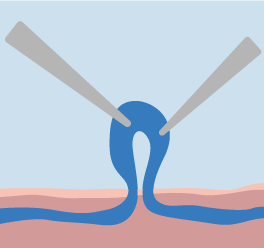
Vein closure starts with a local anesthetic administered to the vein. Ultrasound guidance directs a small incision and a catheter to the diseased vein. A laser or radio frequency energy is applied inside the vein, which results in its closure and elimination. Nearby healthy veins then take over the proper blood transport.
Microphlebectomy

Microphlebectomy is a procedure used to treat varicose veins by removing the problematic veins. A small incision is made close to the vein, and a tiny hook is then used to pull the vein out, essentially preventing further issues. When the vein is removed, the healthy veins can then transfer blood flow back to the heart.
VenaSeal

VenaSeal, also known as endovenous adhesive ablation, is a procedure that treats varicose veins using ultrasound guidance and a catheter to insert a small amount of medical adhesive to patch up the afflicted veins. Blood can then be routed to other healthy veins after the vein is sealed with direct pressure.
Verithena
Verithena is another treatment for varicose veins that is considered minimally invasive and involves injecting a microfoam that causes the targeting veins to close. Once the vein has been closed, the blood can course through the healthier surrounding veins.
VenaSeal Vs Verithena
VenaSeal and Varithena are minimally invasive treatments for varicose veins, but they use different methods to close off problematic veins. VenaSeal uses a medical adhesive to seal the vein, allowing blood to reroute through healthier veins, with the benefit of requiring no local anesthetic or compression stockings post-procedure.
Varithena, on the other hand, involves injecting a microfoam into the vein, causing it to collapse and seal. This method might require local anesthesia, and patients may need to wear compression stockings afterward. Their choice depends on the vein issue, patient health, and physician recommendation.
VenaSeal
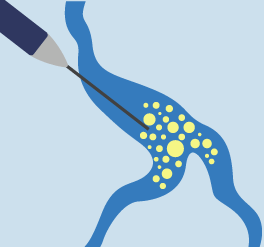
Sclerotherapy is when a liquid is injected into the vein, causing it to seal up, scar, and then disappear gradually. More than one treatment session is usually needed to see results. This is the usual treatment for spider veins, also called telangiectasias, which are similar to varicose veins but smaller and thread-like. They are also caused by malfunctioning of the valves of the veins.
Spider veins can be painless and cause cosmetic concerns or can cause symptoms like those of varicose veins, such as burning, throbbing, localized pain, and bleeding. Spider veins may indicate an underlying vein problem, especially around the ankle or inner thigh. A leg ultrasound can provide further information and identify the source of the problem.
How Vein Treatments Have Evolved Over Time
Vein disease treatment has significantly evolved, shifting from invasive surgical to minimally invasive techniques. Traditional treatments like vein stripping, requiring hospital stays and longer recovery, have largely been replaced by endovenous therapies that offer reduced downtime and discomfort.
Techniques such as radiofrequency ablation, laser therapy, and newer methods like VenaSeal and Varithena utilize advanced technology to close off problematic veins with minimal side effects. These advancements have improved patient outcomes by offering safer, quicker, and more effective varicose and spider veins treatment options.
What To Do If You Are Bleeding from Leg Veins
Varicose veins caused by incompetent vein valves can result in extremely dilated surface veins. As they dilate, they become thinner and more fragile. The blood flow in these veins is under very high pressure. The veins can start to bleed spontaneously or after minor trauma and must be urgently addressed. This is called spontaneous hemorrhage of a varicose vein.
The bleeding can occur after a warm shower since the heat causes the veins to dilate further. Both large varicose veins and small spider veins can hemorrhage. Since the blood is under high pressure, the blood can shoot across the room. If this occurs, you should immediately get a towel, apply pressure to your leg, and lie down and elevate your leg on some pillows. If the bleeding does not stop, seek immediate medical attention.
Make sure someone is with you since standing or walking can worsen the bleeding, and there is the risk of significant blood loss.
Although many people associate vein disease with the unsightly appearance of dark veins appearing through the skin, several other symptoms and complications can occur. If you are experiencing any of the following symptoms in your legs, vein disease may be the cause:
- Fatigue
- Throbbing
- Aching
- Cramping
- Swelling
- Itching
- Heaviness
- Burning
- Tingling
- Restlessness
These symptoms can often be triggered or worsened by prolonged sitting or standing, cold or hot weather, during your menstrual cycle, or if you are pregnant.
Who Is a Candidate for Varicose Vein Treatment?
Candidates for vein treatment include almost all patients with symptoms such as leg aching or throbbing, swelling, or burning from varicose veins. Those who have their regular activities curtailed due to these symptoms are particularly optimal candidates for vein treatment.
The presence of a complication from vein disease, such as a leg ulcer, also makes someone more likely to benefit from vein treatment. Additionally, more definitive vein treatment could be beneficial if one has tried conservative treatments, such as medical-grade compression stockings, without improvement.
Who is not a candidate for vein treatment?
While most patients suffering from vein problems are good candidates for treatment, some are not.
Patients with poorly controlled diabetes and severe peripheral arterial disease may be prone to complications from vein treatments due to their diabetes. These complications can include suboptimal healing due to poor circulation. Skin abnormalities are common in these patients and can cause cosmetic issues post-procedure.
https://www.ahajournals.org/doi/10.1161/01.CIR.0000036740.75461.80
Other conditions that may prevent you from receiving treatment:
- Patients with blood clotting disorders
- Chronic heart or lung disease
- Active viral or bacterial infections
- Allergies to sclerosant solution
A Vein Clinic With Loyalty and Trust in NYC
The New York Metropolitan Vein and Aesthetic Center has been a trusted vein center in New York since 2008. We have two convenient locations to serve areas: Brooklyn, Manhattan, New York, Borough Park, Westchester, Staten Island, Washington Heights, Queens, Bronx, Inwood, New Jersey, Connecticut, and the Tristate Area. Contact our New York City or Corona offices for further information.
We look forward to meeting you soon in the office that is most accessible to you.
Our Commitment to Patient Safety
Patient safety is our priority at New York Metropolitan Vein and underscores everything we do. Treating each patient with dignity and respect is something we never compromise on. You will be educated about the options for treatment, the pros and cons, risks and benefits, and all your care questions and concerns will be addressed so you feel comfortable moving forward. Your prior medical and family history will be reviewed to understand your medical conditions fully.
Cost of Vein Treatment
Most insurance, including Medicare, will cover the cost of vein treatments if deemed medically necessary. To meet this requirement, your varicose veins would have to cause you to have leg pain, heaviness, aching, or swelling or cause complications such as leg ulcer, ruptured vein causing bleeding, or recurrent blood clots. The symptoms must affect your daily quality of life, preventing you from doing your routine activities. Additionally, conservative medical treatment must have been attempted for 6-12 weeks without improvement of symptoms. This includes wearing compression stockings, using anti-inflammatory medications, and doing leg exercises. Finally, venous reflux and insufficiency must be demonstrated with a leg ultrasound.
Insurances typically will not cover the cost of varicose vein treatment if there are no symptoms, like pain or bleeding. Therefore, many insurance companies consider varicose veins a cosmetic issue.
Our NY Vein treatment centers can cosmetically treat your spider veins to your satisfaction and offer 12 months of interest-free care credit for those who qualify. We will work with you to achieve your cosmetic care goals.
Why Choose Us As Your Vein Treatment Center
The New York Metropolitan Vein and Aesthetic Center has two vein treatment clinics in NY, one in Washington Heights and one in Corona, Queens. Since 2008, Dr. Goldman MD has offered compassionate and competent vein treatment to thousands of New Yorkers. In response, he has earned 5-star reviews for his care from various online review sites. The center offers the latest technology to offer you cutting-edge medical care. The caring and friendly staff can help with your questions and concerns. Spanish-speaking staff is also available for your convenience.
Why You Shouldn’t Wait to Get Varicose Vein Treatment
- Worsening Symptoms: Over time, the symptoms associated with varicose veins, such as pain, swelling, and a feeling of heaviness in the legs, can worsen. Early treatment can help manage these symptoms more effectively, relieving and preventing them from impacting daily activities.
- Increased Risk of Complications: If left untreated, varicose veins can lead to more serious health issues, including venous ulcers, skin infections, and thrombophlebitis. In some cases, there can be a risk of developing deep vein thrombosis (DVT), which is a significant concern as it can lead to potentially life-threatening complications like pulmonary embolism.
- Quality of Life: The discomfort and aesthetic concerns associated with varicose veins can negatively affect one’s quality of life. People might avoid certain activities or clothing because of their veins, leading to social and psychological impacts. Early treatment can help restore confidence and improve overall well-being.
- Cosmetic Improvement: Many people feel self-conscious about the appearance of varicose veins. The sooner they are treated, the better the chances of minimizing their visual impact, which can be important for personal and professional reasons.
- Preventing Further Vein Damage: Varicose veins indicate underlying venous insufficiency. Without timely treatment, the vein condition can progress, potentially causing irreversible damage to the venous system and surrounding tissues. Early intervention can help preserve vein health and function.
Schedule your free Consultation with a Vein Specialist
Finally, say bye-bye to those unsightly veins and so long to the painful symptoms. Vein disease is common throughout the United States, and vein therapy is no longer the extensive surgery it once was. Now, we use minimally invasive procedures that have you returning to normal activity in no time.
Spider vein treatments in New York are easy when you schedule your appointment at one of our New York Metropolitan Vein clinics.

